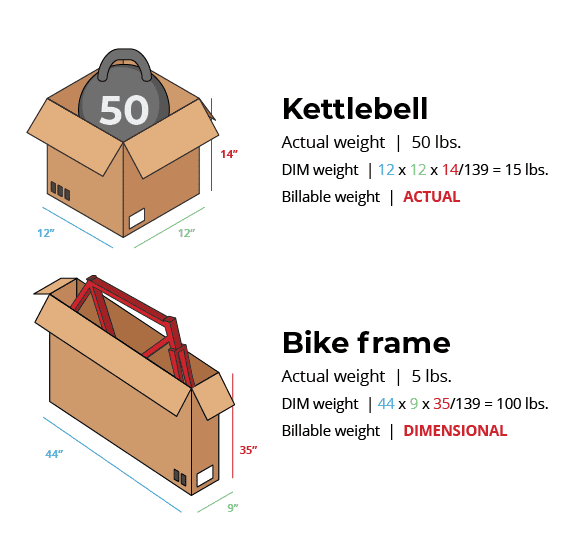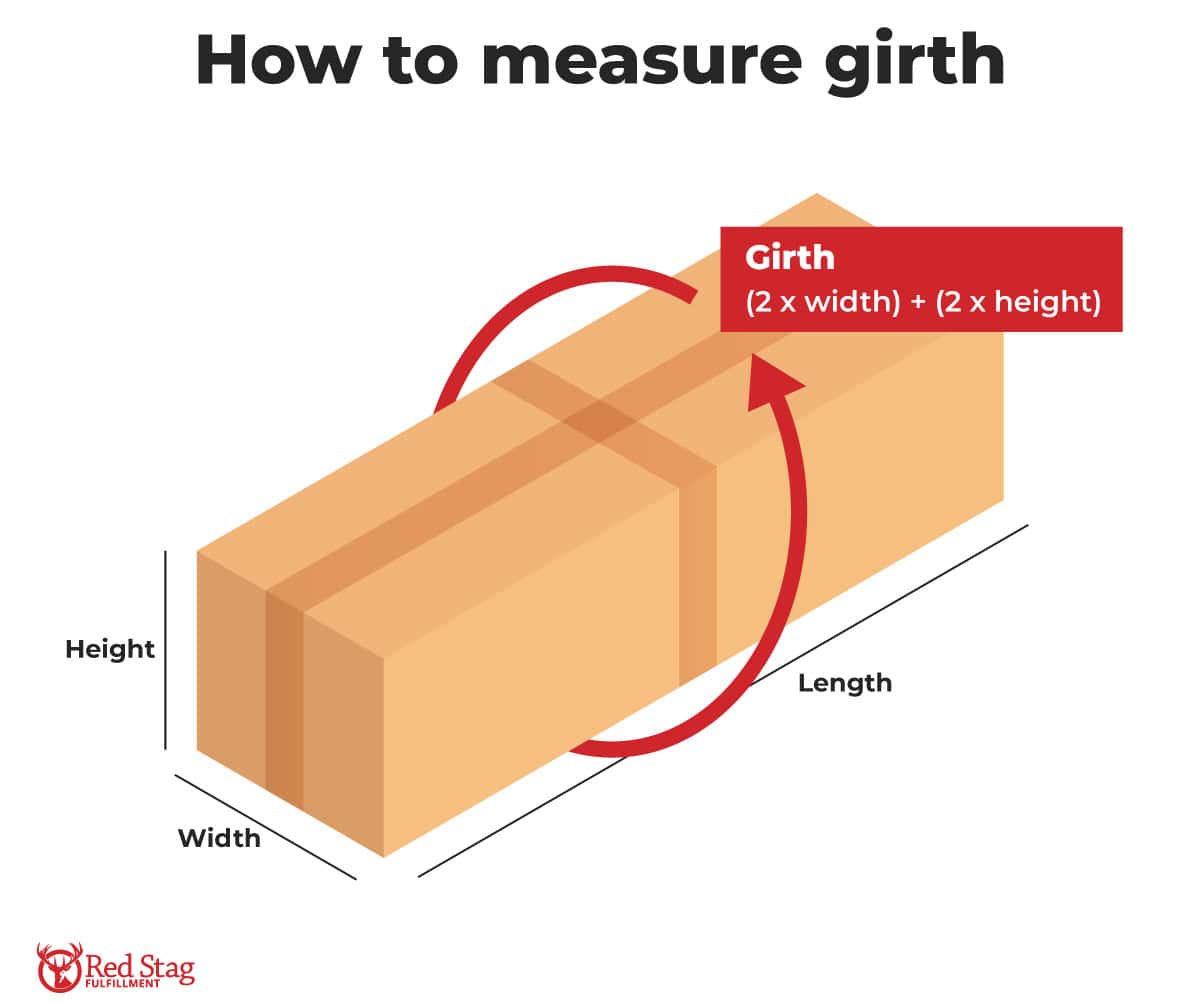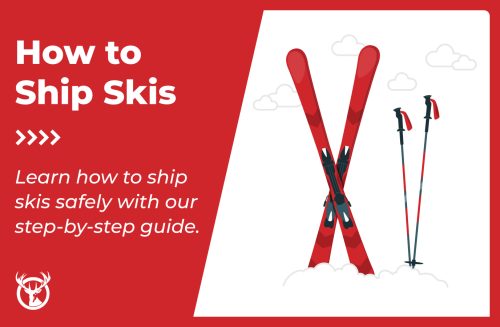Do you need to ship a bike but feel overwhelmed by all the options?
What’s the cheapest, easiest, or fastest way to do it?
Which carrier should you choose?
How do you make it safe?
As a fulfillment company, we’ve shipped tens of thousands bikes of all types and sizes.
We know EXACTLY what goes into it–and what can go wrong.
We’ve seen and heard it all–bent spokes and cassettes, scratched paint, ripped seats.
We know why and how damage happens–and how to avoid it.
Here’s a step-by-step guide to ensure your bike steers around all that.
What you’ll learn

When to consider disassembling the bike

How to choose the right box size

How to pack for optimal protection and minimum shipping costs

Factors that influence carrier selection

Special considerations for ebikes and international shipping

TL;DR:
Key takeaways

The cheapest way to ship a bike is through a specialized bicycle-shipping service such as BikeFlights or ShipBikes.

The fastest way to ship a bike is air-shipping via expedited services like UPS Next Day Air or FedEx First Overnight.

Partially disassembled, most bikes will fit into a 54 x 8 x 28-inch box.

Do you sell bikes online? Running an ecommerce bike business shouldn’t feel like an uphill grind. Yet between careful packaging requirements and steep shipping costs, moving bikes efficiently is challenging. That’s where Red Stag Fulfillment shifts into gear.
We’re oversized-item specialists that have perfected bike shipping—protecting everything from high-end carbon frames to ebikes. With our proven packaging methods and exclusive carrier rates, we’ll help you coast through fulfillment. Get your personalized quote now.
How to ship a bike in 6 steps
Disassemble your bike
01
To disassemble the bike for shipping, you’ll need to:
01
Decide which parts you’ll detach. For most people, detaching the front wheel, pedals, and small loose or protruding parts will be enough to pack the bike compactly.
02
Shift the chain onto the largest cog of the cassette. This will bring the rear derailleur closer to the frame so it doesn’t hit the box sides.
03
Detach any parts that will be packed separately.
Also consider disassembling:
01
Saddle and seatpost if the box won’t close properly.
02
Rear wheel. It’s a sensitive component but will make the most difference cost-wise.
03
Rear derailleur (without disconnecting the cable).
04
Handlebars. Detach or turn them sideways, depending on the shape (drop or straight bars).
05
Brake discs.

PRO TIP: For hydraulic brakes, put a spacer between the pads so they don’t push together if the lever is pressed. These spacers cost about a buck a piece and are available on Amazon. If you’re in a hurry, a piece of cardboard can be used as a spacer.
Choose the correct bike box
02
A cardboard bike-shipping box offers a good balance between cost and protection and is the best option for most people for one-off shipping.
The right box will meet these criteria:

It’s big enough to pack the bike. It should comfortably fit the frame, detached parts, and padding.

It’s not too big. An oversized box will add cost and increase the risk of shifting damage, caused by detached parts moving in the box and damaging the frame or one another.

It’s made for bike-shipping, meaning it’s sturdy and thick.
Calculate the box size for your bike in 4 steps:
01
Measure the dimensions of the disassembled bike. Imagine vertical and horizontal lines at the furthest points and measure those distances to identify its length and height.
02
Measure the detached parts.
03
Plan how the parts will fit the box. What will go where? In most cases, the front wheel will lean onto the frame tubes. But putting pen to paper to draw it out will ensure you use space efficiently.
04
Account for padding of 2—3 inches between the parts and the frame.
Common box sizes

Partially disassembled, most bikes fit into a 54 x 8 x 28-inch box.

Smaller bikes might fit into a box measuring 43 x 11 x 32 inches, depending on the level of disassembly.

PRO TIP: While boxes are typically your best option, other shipping mediums include:
Soft bike bag. Bike bags are generously padded but less rigid than cardboard. They protect from knocks and bumps but do little if a heavy package falls onto it.
Hard-shell case. If you’re an avid cyclist and often ship your bike, a hard-shell case may be your most protective and economical option. However, its price tag is typically cost-prohibitive for one-time shipments.
Where to get the box
You can get used boxes from your local bike shop (likely for free), or you can buy boxes from specialized companies like BikeFlights or ShipBikes.
Food for thought: Have your local bike shop do it all
Mechanics at your local bike shop have probably packed and unpacked thousands of bikes.
They understand all the risks.
Consider paying them to disassemble and ship your bike.

PRO TIP: If you don’t feel confident about putting the bike back together (or recipients lack the skills to do so), ship the bike to a bike shop at the destination. It’s not the cheapest option, but it’s convenient for both parties.
Choose the carrier/company to ship your bike
03
Choosing a carrier for bike shipping will come down to:

Speed vs. cost.

Type of bike (especially for ebikes).

Services offered (standard and expedited).

Track record of shipping bikes reliably and safely.

Coverage-declared value vs. third-party insurance.
The cheapest way to ship a bike is through a specialized bicycle-shipping service– companies like BikeFlights or ShipBikes.
The fastest way to ship a bike is air-shipping via expedited services like UPS Next Day Air or FedEx First Overnight. With either option, your bike will arrive the next day.
Carrier vs. specialized bicycle shipping service–what’s the difference?
Carriers are companies like UPS, FedEx, and USPS. They ship bikes, among other things.
Specialized bike-shipping companies don’t transport the bikes themselves.
They use the carriers and add value through tracking, custom boxes, packing accessories, and (potentially) lower costs.
Cost vs. speed
The cost is determined by a few key factors:

Size/weight of the boxed bike.

Shipping distance.

Speed and transport service–standard vs expedited shipping.

Bike’s value and coverage offered.
If you’re looking to save money, go with a bike-shipping company like BikeFlights or ShipBikes.
They have bulk-shipping deals with the carriers, which allows them to be cheaper.
The trade-off is speed.
Using a bike-shipping company will take one or two days more than shipping with the carrier directly. On greater distances, that translates to significant transit times–up to 9 or 10 days for coast-to-coast shipping.
If speed is a priority, ship directly through a carrier and choose an expedited service–like UPS Next Day Air or FedEx First Overnight®.
The trade-off is cost, which can be north of $1,000 on greater distances.
Explore our complete guide on how much it costs to ship a bike.

PRO TIP: If you’re flying to the destination, pack your bike into a soft bag and check it as oversized luggage. It’s convenient and might cost less than shipping. Plus, you’ll have your own bike when you arrive. The downside is storing the bulky bag.
Dimensional weight of a bike
Dimensional weight is a way for the carriers to charge based on package size instead of weight.
A bike-shipping box is relatively light for its size.
So, you’ll probably be billed for the dimensional weight and not the actual weight.
Below is an illustration of the logic and calculations behind dimensional weight–kettlebell vs. bike frame.

Coverage–declared value vs. insurance
All major carriers have similar coverage terms.
They’re based on the declared value, which is your assessment of the bike’s worth.
Here’s the important part: The declared value of the bike is NOT insurance.
It’s the carrier’s maximum liability.
So, it’s subject to exceptions and limitations.
If something happens to the bike in transit, it will be your responsibility to prove the damage and how much the repair will cost.
You file a claim, and the carrier reviews it and investigates.
It’s a process.
Our advice: Get third-party insurance for expensive bikes
Insuring your bike through an agent or broker provides valuable peace of mind.
It’s also more comprehensive and less complicated:

You’re covered door-to-door.

You’re paid even if the damage is not the carrier’s fault.

You might get compensated for the bike’s full value and the shipping cost (depending on the terms).
Size limits
If the box exceeds carrier size limits, your bike will likely be shipped as freight* (instead of standard parcel shipping).
The limits for combined length and girth are:

165 inches–for UPS and FedEx.

130 inches–for USPS Retail Ground (still might be charged as oversized).

108 inches–for other USPS options.
*When shipped as freight, the bike will be separated from the smaller parcels and packed onto a pallet or in a container.

NOTE: There are other length and weight limits, too (e.g., 108 inches long or 150 pounds). But it’s not likely a bike will exceed them.

Prep the bike for shipping–pack and pad
04
By this point in the process, you know two critical pieces of information–the carrier and the box size.
It’s time to prep the bike.
Get packing supplies and tools
Here are the supplies and tools you (might) need.
| Packing Supplies | Padding Supplies | Packing Tools |
|---|---|---|
|
|
|
Disassemble the bike
Minimum disassembly includes:

Front wheel.

Pedals.

Any part or accessory that protrudes out and might pierce the box.

Small parts that might come loose during transit (spacers, bolts, etc).
If you’re savvy with a wrench, consider a more extensive disassembly.
It will allow you to ship in a smaller box, lower the cost, and better protect the bike.
Prep the bike for boxing
01
Wrap all detached parts separately. Use foam sheets and bubble wrap.
02
If you’ve detached the derailleur, pad it generously (especially the jockey wheels and the cage). Wrap it in foam bubble wrap, add a layer of corrugated cardboard, and pack it in a separate small box.
03
Protect the bike’s tubing. Use the foam tubes as the first line of defense and wrap an extra layer of foam sheets or bubble wrap around the tubing.
04
Secure the foam with tape. DGeneral adhesive tape will leave a gunky residue in the frame. Use painter’s tape instead.
05
Add extra padding on one side of the frame where the detached wheel will nest.
06
Add a firm distancer between the fork legs to avoid bending. A piece of PVC or thick cardboard cut to size will do.
07
Detach the handlebars and wrap them in foam sheets—or turn them sideways, depending on the box size.
08
Loosen the stem and turn it backward to leave more room for other parts.
09
Let a bit of air out of the tires, but don’t deflate completely.
10
Protect all detached parts and place them in boxes or bags.

PRO TIP: Bike seats are awkward to pack separately. So put the seat in the lowest position and see if the box will close properly. If it does, leave the seat in place for shipping.
Box it all–bike and parts
05
If possible, get a second person to help with boxing. Extra hands are helpful when maneuvering large or awkward items.
Boxing steps:
01
Add base-layer padding to the bottom of the box. A styrofoam board cut to size makes for the perfect base.
02
Slide the bike into the box.
03
Secure the handlebars to the top tube or the fork.
04
Reposition or remove the seat. If the box closes with the seat in the lowest position, leave it on. If not, remove and pack it.
05
Place the smaller detached parts into the box.
06
Try different configurations. Make sure the cables aren’t too tight and there’s little risk of shifting damage.
07
Add extra cardboard to both sides of the front wheel. Zip-tie it to the spokes.
08
Slide in the front wheel with the rotor facing away from the frame.
09
Secure parts to one another with zip ties.
10
Check for protruding parts (like the axel) pressing against the box.If necessary, add pieces of cardboard to dampen the pressure.
11
Fill the empty spaces in the box with cloths, packing paper, bubble wrap, and foam sheets.Focus on areas where the bike parts are closest to one another.

PRO TIP: If this sounds overwhelming, some carriers offer pack-and-ship service specifically for sports equipment. It’s probably the easiest way to ship a bike because they do it all for you. Learn more on the UPS website.
Seal and add shipping labels
06
To properly seal and label the bike, follow these steps:
01
Use strong packing tape (at least 2 inches wide) and seal along all sides in an H-pattern.
02
Add the shipping label with the basic info–destination, return, and tracking.
03
Add special handling instructions and stickers–FRAGILE, THIS SIDE UP, DO NOT STACK.
04
Create and affix unpacking and reassembly instructions for the bike’s recipient.
Other considerations and FAQs
Domestic vs. international bike shipping
It costs more to ship a bike internationally. You might also need additional paperwork–invoice, forms, bill of lading, customs declaration, packing slip, etc.
If you’re flying domestically or abroad with your bike, checking it as oversized luggage is probably cheaper and more convenient than shipping it.
Ebikes–in a category of their own
Ebikes are “different beasts” when it comes to shipping.
They’re much heavier, and the batteries are considered hazardous materials, so carriers will only transport them via ground services.
To learn more, see our guide on how to ship ebikes here.
Ship bikes without stress
If you’re selling bikes online, shipping in bulk can be a headache.
Partnering with a third-party provider can transform your business.
It’s a way to reclaim your time—allowing you to focus on growth instead of scratches and dents.
As an industry-leading 3PL provider, we’ve shipped hundreds of thousands of bikes.
We’re excellent at it and have the awards to prove it.
Ready to level up your business? Contact us today, and let’s talk about making it happen.










